
Pakistani American Vote: Rising Political Power in 2024-2026
Explore how Pakistani Americans are shaping U.S. elections with rising voter turnout, civic power, and political impact in 2024 and 2026.
PAKISTANI AMERICAN VOTERS
6/19/20254 min read


The Pakistani American Vote: Why It’s More Powerful Than Ever in 2024–2026
Introduction
The Pakistani American community is rapidly emerging as a significant political force in the United States. With over 680,000 individuals identifying as Pakistani, the diaspora is now the seventh-largest Asian-origin group in the country. High educational attainment, a strong professional presence, and increasing naturalization rates have empowered this group to influence public policy and electoral outcomes. From suburban town halls to Washington D.C., Pakistani Americans are raising their voices on issues like civil rights, immigration, and U.S. foreign policy toward South Asia. As political engagement deepens, the upcoming 2024 and 2026 elections present an unprecedented opportunity for impact.
Conclusion
Pakistani Americans are no longer a quiet, overlooked community—they are a rising force in American politics. Armed with education, economic strength, and growing civic awareness, they are reshaping narratives, influencing ballots, and defending democratic ideals. With continued unity, strategic outreach, and investment in youth leadership, the 2024–2026 window can mark a golden era of Pakistani American influence across local, state, and national stages.
1. Population Growth and Naturalization
Between 2000 and 2023, the Pakistani American population more than quadrupled—from 165,000 to nearly 680,000. This surge is largely attributed to family-based immigration, student visas converting to residency, and tech-sector immigrants acquiring green cards and citizenship. Naturalization plays a key role: about 70% of all Pakistani-born residents are now U.S. citizens. This high rate of citizenship converts directly into voter eligibility, enhancing the community’s political leverage. Additionally, second-generation Pakistani Americans, born in the U.S., are entering voting age in record numbers.
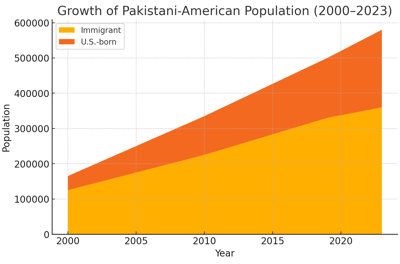

2. Naturalization Rate
Naturalization rates among Pakistani immigrants have steadily climbed from 65% in the early 2000s to 70% by 2023. Compared to other immigrant groups, Pakistani Americans demonstrate a strong desire to become full participants in civic life. This motivation is driven by several factors: a cultural emphasis on education and responsibility, exposure to civic activism, and the growing need to influence domestic and foreign policies. Community organizations have also played a role, offering free citizenship clinics and legal assistance to green card holders.
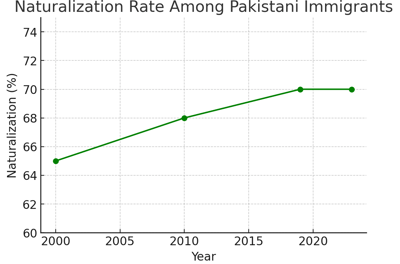

3. Political Alignment
The political journey of Pakistani Americans has evolved significantly. Once leaning Republican due to conservative social values, the community began shifting leftward post-9/11 due to Islamophobia, surveillance policies, and immigration reforms under Republican leadership. The trend solidified under President Trump, whose rhetoric and policies galvanized minority communities. In 2020, Pakistani Americans overwhelmingly voted for Joe Biden, with estimates suggesting nearly 89% Democratic support. The trend is expected to continue in 2024, with issues like healthcare, student loans, civil rights, and Palestinian justice high on the community's agenda.
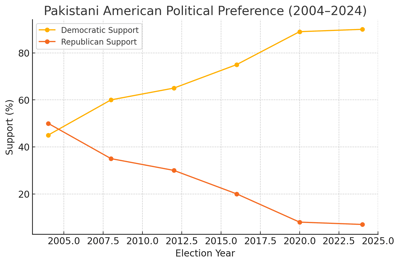

4. Economic Success and Civic Potential
Pakistani Americans have a median household income of $106,000, significantly above the national average. Many work as doctors, engineers, IT professionals, and entrepreneurs. Their financial success translates into greater civic activity—including political donations, community fundraisers, and campaign volunteering. Educated and economically empowered, they are increasingly positioned to run for office, sit on advisory boards, and influence school curricula and policing reforms. This economic clout enhances the credibility and reach of Pakistani American advocacy groups.
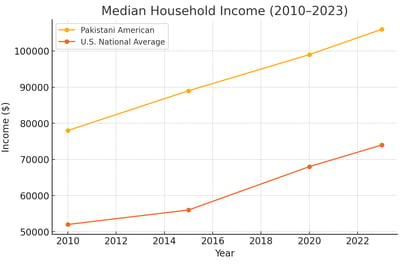

5. Geographic Influence
Pakistani Americans are concentrated in states with high electoral stakes: California, Texas, New York, Illinois, Virginia, and New Jersey. Within these states, they often reside in swing districts—such as Northern Virginia, Metro Atlanta, and suburban Philadelphia. In close races, even a few thousand organized voters can sway local, congressional, or state elections. Organizations like VOPA are mobilizing voters through digital outreach, mosque engagement, and in-language canvassing.
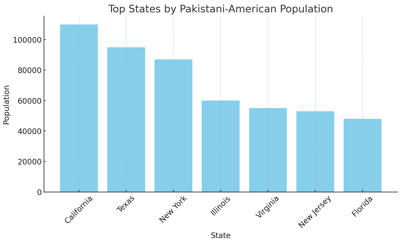

6. Youthful Demographics
The Pakistani American population is young: over 60% are under 45, and nearly one-third are between 18–34. This youthful energy fuels a digital-first activism ecosystem—focusing on TikTok campaigns, WhatsApp mobilization, and Twitter/X advocacy. Young voters are also more progressive on issues like climate change, LGBTQ rights, student debt relief, and foreign policy reforms. With the right platforms and mentorship, this demographic will define the next wave of civic leadership.
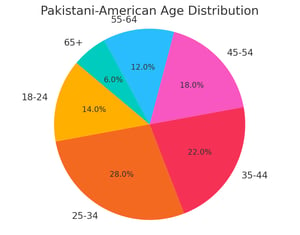

Disclaimer
This article is an independent geopolitical analysis intended for informational purposes only. It does not promote hostility between states or support any political ideology. The views expressed are based on publicly available data and current regional trends as of June 2025. Readers are advised to consult official sources for government policies.
Voice of Pakistani Americans
TOGETHER WE CAN DO IT!
Support
© 2025. All rights reserved.


